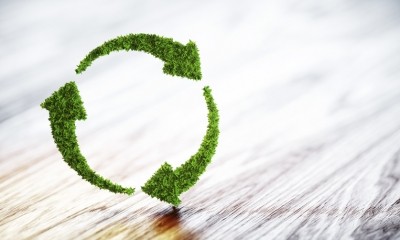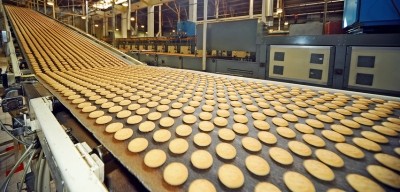EU animal feed sector urged to innovate as former foodstuff utilization stagnates

The former foodstuff processing industry's turnover reached over €1bn in 2020, according to EFFPA. The sector generates feed for farm animals from unavoidable and unintended food losses occurring at food manufacturing and retail level. Typical examples are bread, breakfast cereals, biscuits, and confectionery, high energy ingredients for animal feed.
Alexander Romme, president of the European Former Foodstuff Processors Association (EFFPA) and purchasing director at FeedValid, emphasized that these raw feed materials are sustainable. They prevent food waste, they have an exceptionally low carbon footprint, and are "the very definition" of circular products.
Case studies from the Netherlands demonstrate that circular and sustainable feeding concepts linking farmers and retailers can support food waste reduction.
Romme was speaking during a panel at the 68th FEFAC annual public meeting focused on key regulatory and market drivers needed to boost circularity in the EU feed and livestock chain.
Ruud Tijssens, chairperson of the International Feed Industry Federation (IFIF), also participating in that panel, questioned why the volumes of former foodstuffs produced in the EU have remained static since 2015. “Why is this not speeding up?”
Romme believes there is significant potential for increasing production, but innovation in feed formulation and industry perspectives are essential for growth. He suggested that formulators should consider both the nutritional value and carbon footprint of raw materials and extend the use of concepts based on former foodstuffs to a wider range of species and life stages
An audience member also responded to Tijssens' question saying that the EU former foodstuffs sector has not expanded significantly due to lack of profitability and inability to compete with conventional feed ingredients on price in terms of rations for grower and finisher stages in pigs.
Swine producers, he continued, remain extremely sensitive to any fluctuation in costs.
Additionally, former foodstuff processors tend to deliver to niche feeding segments, but, perhaps in supplying the pet food industry as well they can remain competitive, he added.
Romme pointed to the increasing use of food losses by the biogas sector, which could have been upcycled into animal feed, as potentially another factor in sluggish growth for the former foodstuffs sector.
“Indeed, we are not alone in the bioeconomy,” remarked Anton van den Brink, deputy secretary general, FEFAC.
EU food waste targets
Food waste remains a burning issue in the EU, as elsewhere. Nearly 57m tons of it are generated annually in the EU (Eurostat, 2022). By 2030, the EU wants to introduce legally binding targets to reduce food waste.
In March this year, MEPs voted on a directive to raise waste reduction targets to 20% for processing and manufacturing, and 40% for retail, restaurants, and households.
A study by Boumans et al noted that only an estimated 5% of the 100m tons of food loss and waste (FLW) generated in the EU is currently utilized in animal feed.
The total amount of FLW not currently used in livestock feed or biobased products is estimated at one-fifth of total EU production, or 88m tons per year, found that paper. Most of this FLW comes from household consumption (53%), followed by food processing and packaging (19%), retail and distribution processes, including food service, wholesale, logistics, and markets (17%), and primary production, including post-harvest handling and storage (11%).
Animal meat and fat wasted in the EU rendering industry, such as from slaughterhouses and food-producing plants, accounts for about 18m tons per year. Of this, only about 2.5m tons (13.9%) are processed into pet food and animal feed.
We also reported from the Brussels event on FEFANA's call for fit for purpose feed additive regulations and the EU feed protein strategy.








